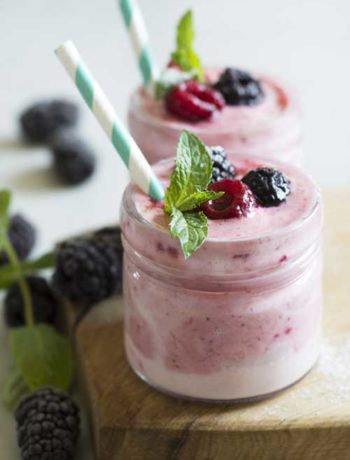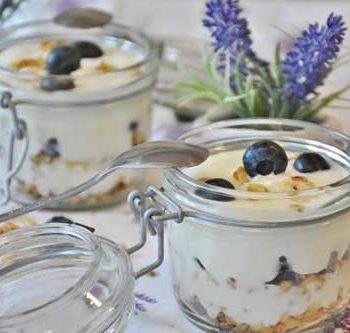This post contains affiliate links, which means I may earn some money if you click on one. Don't worry, there is no additional cost to you. Thank you for supporting my blog.
This flavorful fizzy drink has become popular, even outside the small circle of “real foodies”. What is it?
It is Kombucha.
Apparently, some people have a very difficult time breaking the habit of soda consumption. This Donna Schwenk has a FANTASTIC blog about fermented foods, and she has a personal testimony about how Kombucha helped her kick her soda habit. You can read her story here.
If you are trying to break the habit of drinking soda while improving your health this is a good choice for you. Though I made poor food and drink choices in my younger days, soda consumption was not one of them. Sure, I drank soda on occasion, but I never suffered from a soda addiction. (Gratefully). Honestly, it made me feel very bloated so I avoided it.
What is Kombucha?
It is a sour tasting fermented beverage. It has it’s origins in Russia, where it is often called “tea kvass”. It is a sweetened tea that is cultured with a Symbiotic Colony of Yeast and Bacteria. (SCOBY). You can learn more about Kombucha and other fermented food in the book “Wild Fermentation: The Flavor, Nutrition, and Craft of Live-Culture Foods.”
So basically, Kombucha is a carbonated beverage that is formed when probiotic bacteria and yeast ferment sugar and tea. The carbonation is a by-product of the fermentation process. It not only tastes good, but it is actually GOOD for you, (unlike soda).
I did not start drinking Kombucha until recently because I read it can have a very strong detoxifying effect on the body. (I was breastfeeding a 5 month old when I first learned about Kombucha. A heavy detox is not recommended for nursing moms). When I started drinking Kombucha, I introduced it very slowly. (I literally drank only a few sips each day). I did not experience any type of detoxifying reaction, but I have read that can be a concern, especially if you have any sort of gut dysbiosis.
I started brewing my own Kombucha recently because it is less expensive to make my own. This story about Kombucha Tea Makers Vs. the Feds concerns me too. If Kombucha becomes more “regulated”, it will make it more expensive to buy. I also started to brew Kombucha because I was curious about it, and thought it could be fun to experiment with different flavors.
I was surprised to discover that Kombucha has quite a bit of sugar in it. Until a few days ago, most of the articles I read said most of the sugar is used by the SCOBY in the fermentation process. However, some people have actually tested their Kombucha and discovered this was not true. If you ferment it LONG enough, then a lot of the sugar will be used up. But I typically ferment for 7-8 days. From what I have read, there is still a lot of sugar in my brews, around 4 tsp per 8 ounces. (Which honestly, I am not too happy about. I try to limit my sugar consumption). You can read about this and other surprising findings here. I have not tested my brews for sugar yet, but I plan on doing this. For the moment, I will be limiting my daily Kombucha consumption to 4 oz per day.
I have read some interesting claims people have made about the health benefits of Kombucha. I am really interested in the claim that it can prevent grey hair, but for the moment that is just an internet rumor. I have not been able to substantiate that claim.
Anti-microbial activity has been confirmed by laboratory tests, (in plain talk that means Kombucha can kill the bad germs). However, the study says it is the acetic acid that is responsible. (Acetic acid is the acid which gives vinegar it’s sour taste).
I thought it was very interesting that Candida was not inhibited by Kombucha. (If you are adding fermented foods to fight Candida, then maybe you should consider another cultured food). This result was also surprising to me because I thought the beneficial yeast in Kombucha would compete with Candida. Maybe eating the SCOBY would help?
The SCOBY I keep referring to is a Symbiotic Colony of Bacteria and Yeast. It is a gelatinous slimy mass that is responsible for brewing your Kombucha tea. (No, I was sort of kidding about eating it. It is not something I have tried, nor do I plan on trying it anytime soon).
The easiest health claim I can confirm is that Kombucha is helping people kick the soda habit. That is enough motivation for me to write this post.
So here’s how I brew mine.
Cherry Kombucha
You will need ..
Organic Sugar
Green Tea or Black Tea
A large stainless steel pot
One gallon glass jar
SCOBY
Tart Cherry Juice (flavor)
Grolsch-style Bottles (optional)
- Obtain a SCOBY. If you know someone who makes Kombucha, you can get one from him or her. (A new SCOBY is produced with each brew). I planned on ordering mine from Culturedfoodlife.com, but they were out of stock, so I got this one from Amazon.
- Boil 3 quarts of water. Once the water is boiling, add one cup of sugar. Cover and let it boil for 5 minutes.
- Add 5 bags of green or black tea, (or if you prefer, a combination can be used). Let the tea steep for 10 minutes. Then remove the tea bags.
- Let the water cool. This is important. If the water is too hot you will kill your SCOBY. It will take a few hours for it to cool, so plan accordingly.
- Once the water is cooled, add your SCOBY plus 1/4 cup of Kombucha from a previous brew. (If you have a new SCOBY, use the liquid that it came in).
- Cover the jar with a cloth. Cheesecloth is a little too porous. (Some people use paper towels with a rubber band). Let the Kombucha ferment for approximately a week. You can ferment it longer, but it will make the taste more “sour” than sweet. To get the taste my family likes, I have been fermenting for 7-8 days. But fermenting is more of an art than science, so feel free to experiment.
You can bottle up your Kombucha at this point and add the cherry juice. (This is what I did initially. I added one TBS of tart cherry juice to each quart). But if you want more fizz, then you should do what is called a “Second Fermentation”. I was a little nervous to do this at first because I second fermented some water kefir once and it got a little “too bubbly”. (When I opened the bottle it sprayed everywhere, it made a mess all over my kitchen. I have not had that problem with second fermenting Kombucha yet.
Second ferment
- Add 1 TBS of tart cherry juice to a Grolsch bottle, (I ordered mine here). Using a funnel makes this easier. Please make sure you use a jar that is DESIGNED to handle pressure. I do not recommend trying to second ferment in a jar that is not designed for that use. (You could end up with an glass explosion. Not trying to scare you, but be careful).
- Add the Kombucha tea. I only fill up the bottle 3/4 of the way, just to the place where the bottle narrows.
- Place the Kombucha bottles someplace where you won’t forget about them. I have been placing them in a cooler, just in case there is too much pressure build up. (If a bottle explodes, then it is contained).
- Ferment 12-24 hours. I read you can second ferment longer, but I have not personally tried that yet.
My family really likes the taste of Cherry Kombucha. It is very easy to make. It does not taste very sweet to me, so I am very curious about the sugar content. I also wonder how much sugar is consumed during the second fermentation.
I am not in any way shape or form a Kombucha expert. I literally started “brewing” this funky tea a few months ago. There are a lot of people out there who have a lot more experience than me. If you want more information about Kombucha, I encourage you to visit Donna’s blog at www.culturedfoodlife.com. Donna is sort of an expert at making Kombucha. She has a lot of recipes too.
Do you drink Kombucha? Have you made it yet? Would you eat a SCOBY?





No Comments